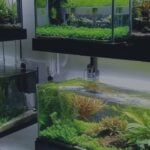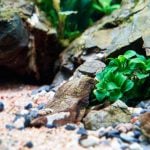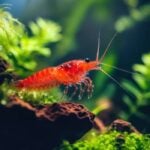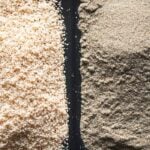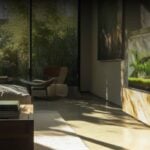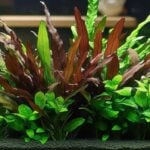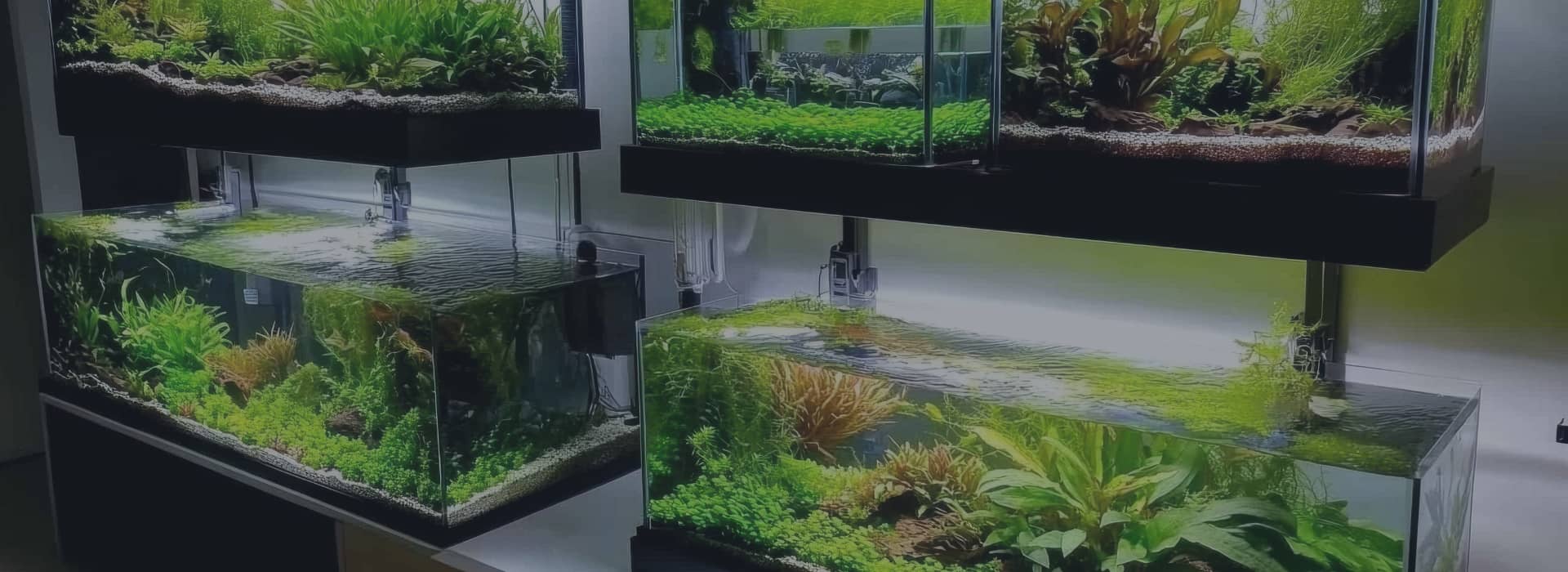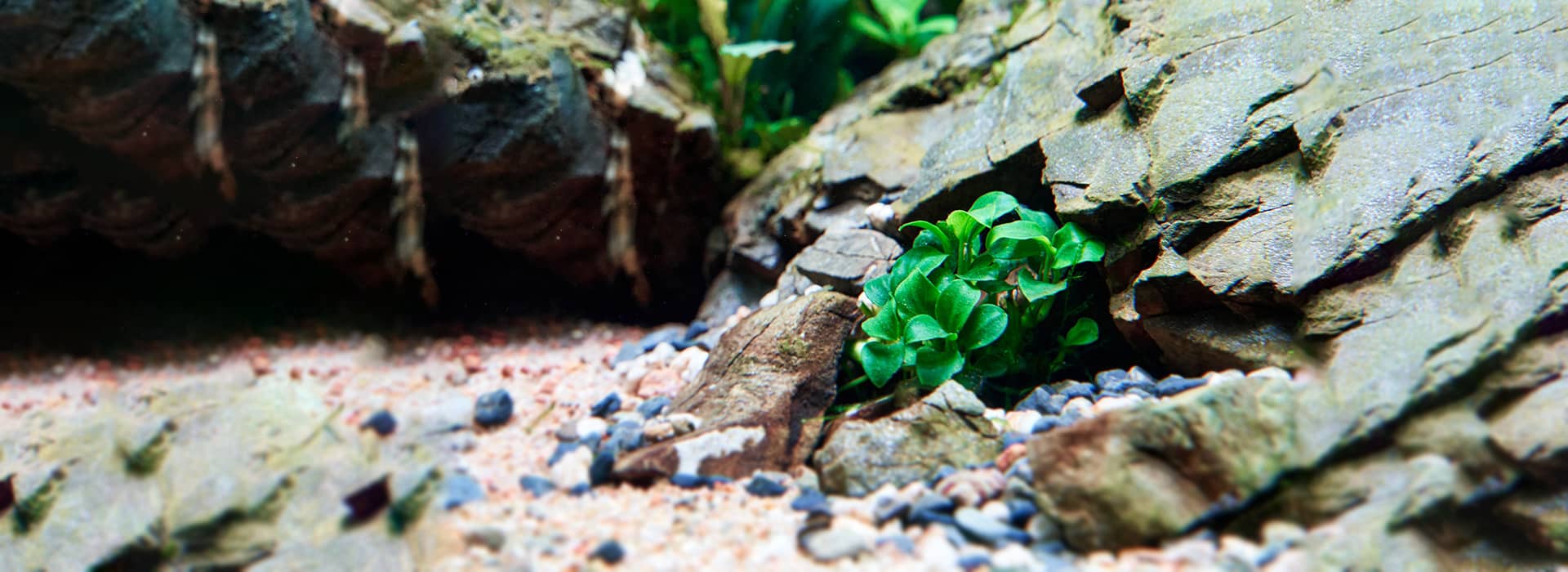Aquascaping is a very rewarding facet of the aquarium hobby. One of the reasons why it is so rewarding is because of how many possibilities it offers. Since aquascaping has been around for a long time, it has developed into many distinct styles.
These styles can be great sources of inspiration and they can provide you with a clear pathway on how you want to approach the hobby.
There are many different aquascaping styles and listing all of them would be near impossible. However, here are the 10 most influential and popular styles
- Natural style aquascape – Ideal for beginners
- Dutch style aquascape – An underwater garden
- Iwagumi style aquascape – Minimalistic and classy
- Jungle style aquascape – Lush and unstructured
- Bamboo style aquascape – Elegance of bamboo
- Waterfall style aquascape – The ultimate illusion
- Island style aquascape – A mini oasis
- Algae style aquascape – Turn a problem into a positive
- Reef style aquascape – Why should freshwater hobbyists have all the fun?
- Takashi Amano aquascape – The holy grail
Here is a closer look at each style.
Natural style aquascape
The natural style of aquascaping aims to recreate a natural habitat, such as a river or lake, within an aquarium. This style tends to have a more relaxed and informal appearance, with plants and other elements arranged in a more natural and random manner.
To create a natural style aquascape, you’ll need to choose plants that are suitable for your aquarium and arrange them in a way that looks natural and unstructured. You can also add elements such as rocks, driftwood, and substrate to create a more realistic and varied environment. Avoid symmetry as that rarely exists in natural landscapes.
One important aspect of natural style aquascaping is choosing the right plants. Some good options for natural style aquascapes include stem plants, such as Bacopa or Rotala, and foreground plants that look like grass. You can also add some taller plants, such as Anubias or Java fern, to create a more varied and realistic appearance.
Rocks and driftwood play an important role in making the aquascape feel natural. Use clever placement of the plants and décor to hide filter intakes, heater, and anything else that looks artificial.
If you are starting out as an aquascaper then the natural aquascape is your best bet. It offers freedom and flexibility while being fun enough to keep you interested. The natural style aquascape is also a great stepping stone on to the more complicated styles.
A fine substrate like aquarium soil and sand works well in natural landscapes. Keep in mind that apart from providing the necessary nutrients to the plants, the substrate will also play an aesthetic role. For example, when creating a river landscape, use darker substrate.
Another cool feature about this style is that there is something for everyone. Everything from a low-tech beginner tank to a high-tech advance tank can be styled in this manner.
Great plants for the natural style aquascape include
- Anubias (versatile plant that can either be used as a centerpiece plant or can be attached to hardscape elements)
- Java Fern (Can be grown in groups or attached to hardscape elements)
- Amazon Sword (hardy and great as a background plant)
- Java Moss (provides a lush appearance and can be attached to virtually anything)
Dutch style aquascape
The Dutch style is almost the exact opposite of the natural style. This style of aquascaping is characterized by a highly structured and formal layout, with a focus on symmetry and balance. This style originated in the Netherlands and has become popular worldwide due to its visually striking and aesthetically pleasing appearance.
To create a Dutch style aquascape, you’ll need to choose plants that complement each other when arranged in a structured and formal manner. The trick to creating a great Dutch style aquascape is by densely planting different types of plants together that create a sense of multiple textures and colours coming together in a distinct yet cohesive manner.
One of the most common techniques used in this style is terracing. Plants of the same type are grown together and different groups are arranged one after the other to get the contrasting effect. A single red plant is often used as the central focal point.
Leaving small gaps between the dense vegetation can create the illusion of pathways to make the aquascape resemble a garden even more. This style often requires a dedicated CO2 system and regular dosing with fertilizers.
Great plants for the Dutch style aquascape include
- Saurus cernuus and Lobelia cardinalis (grown in a manner that is short in the front and tall in back to create a sense of depth)
- Crypts (provide great contrast)
- Alternanthera reineckii, Ammania, Rotala (great as focal points)
- Java Moss (provides a great texture while also filling up empty spaces between the other plants)
- Hygrofilia corymbosa and Limnophila aquatica (great as background plants)
Iwagumi style aquascape
The Iwagumi style, also known as the Japanese style, of aquascaping is characterized by a minimalist and naturalistic approach, with a focus on rocks, sand, and a few carefully selected plants. This style is inspired by the distinct natural landscapes of Japan and is known for its simplicity and serenity.
To create an Iwagumi style aquascape, you’ll need to choose a small number of carefully selected plants and arrange them in a way that complements the rocks and substrate in your aquarium. A common element in Iwagumi style aquascapes is a group of three main rocks, known as “sekijika,” which are used to create a sense of balance and harmony.
When choosing plants for an Iwagumi style aquascape, it’s important to select species that are relatively low-growing and compact. Some good options for this style include stem plants as well as carpeting plants. You can also add some taller plants to create visual interest and depth.
In addition to plants, you can also add other elements to your Iwagumi style aquascape, such as rocks and driftwood.
The best plants suited for the Iwagumi style include
- Eleocharis parvula or dwarf hairgrass (the delicate, grass-like foliage creates a carpet-like effect in the foreground)
- Hemianthus callitrichoides or dwarf baby tears (another plant that creates a cool carpet-like look but with a different texture)
- Anubias barteri (a hardy plant with large, leathery leaves that can add a sense of stability and grounding. It is slow growing which is perfect for this style)
- Bucephalandra (has attractive, wavy foliage and can be used to add texture and interest)
- Staurogyne repens (its small, compact leaves and is often used to add a sense of structure and form)
Jungle style aquascape
The jungle style of aquascaping is characterized by a lush and densely planted aquarium, with a variety of different plants and a more natural and unstructured layout. This style is meant to replicate the dense and varied vegetation found in a tropical rainforest.
To create a jungle style aquascape, you’ll need to choose a wide variety of plants and arrange them in a way that creates a lush and dense appearance. You can use a mix of stem plants, foreground plants, and taller plants to create visual interest and depth.
In addition to plants, you can also add other elements to your jungle style aquascape, such as rocks and driftwood. Bogwood’s darker coloration perfectly matches the jungle style aquascape. Creative use of bamboo can yield stunning results
Great plants for this style include
- Cryptocoryne wendtii (the long, slender leaves can add a sense of movement and flow to a jungle style aquascape)
- Java fern (a popular choice for jungle style aquascapes because of its lush, tropical appearance and its ability to grow attached to wood or rock)
- Anubias barteri (adds a sense of stability and personality to a jungle style aquascape)
- Bamboo (Bamboo is not a traditional aquatic plant, but it can be used in a jungle style aquascape to add a sense of verticality and to create a feeling of depth and dimension. It is important to use a species of bamboo that is appropriate for use in aquariums)
Bamboo style aquascape
That brings us to the bamboo style of aquascaping which is characterized by the use of bamboo as the main plant, with a focus on creating a simple and elegant aquascape. This style is inspired by the natural beauty of bamboo forests and is known for its serene and calming effect.
To create a bamboo style aquascape, you’ll need to choose a suitable bamboo plant and arrange it in the aquarium in a way that creates a visually pleasing and harmonious appearance. You can use a single bamboo plant or a group of bamboo plants, depending on the size and shape of your aquarium.
Some good options for this style include Lucky Bamboo (Dracaena sanderiana), which is a popular choice for small aquariums, and Black Bamboo (Phyllostachys nigra), which is a more robust and fast-growing species.
In addition to bamboo, you can also add other elements to your aquascape. Some options include rocks, driftwood, and a variety of different plants. Just be sure to choose elements that gel with the bamboo forest aesthetic.
Waterfall style aquascape
The waterfall style of aquascaping is an advanced type of natural style aquascape that aims to recreate the appearance of a natural waterfall within an aquarium. This style is characterized by the use of rocks, plants, and water flow to create a visually striking and realistic environment.
The main attraction here is, of course, the underwater waterfall. It is an illusion created using some clever tubing, a pump, and some fine sand. Here are the exact steps on how to create the most basic version of the underwater waterfall effect
- You will need a 1-inch diameter PVC pipe that is as tall as the waterfall you want to create which will stay completely submerged once the tank is filled up
- Apart from this you will need a PVC elbow, an airstone, an aquarium air pump, and some form of rockwork to hide all these things. I like to make this by carving thick Styrofoam and coating it with cement. This offers a lot of flexibility as I can mould it exactly to fit my vision. A more complicated approach would be to glue together real rocks and while this will give a more convincing look, getting all the different pieces to fit together will require a lot of trial and error and a lot of rocks to choose from. Make sure that there is an opening at the top that will act as the mouth of the waterfall. Make sure that there is a collection area at the bottom behind the rockwork for the sand to collect in.
- Cut the bottom opening of the pipe at a 45° angle. Attach the elbow on the top in such a way that it is in the same direction as the opening in the bottom. Choose a good spot to place the pipe in the aquarium. A corner usually works best for this.
- Drill a hole on top of the elbow directly above the main pipe just large enough to snugly let in airline tubing and run the tubing all the way to the bottom of the pipe where you will need to attach the airstone
- Attach the other end of the tubing to the pump
- Add the sand around the bottom opening. Make sure that the sand isn’t too fine or too coarse. Extremely fine sand will just muddy up the water while sand that is too coarse may not rise all the way up to the top
- Place the rockwork in front of this setup with the elbow’s opening going through the opening in the rockwork through which the sand can fall creating the illusion of a waterfall. Seal the gap around the elbow’s outlet with some aquarium safe silicon or epoxy.
- Turn on the pump and you are good to go
- You can obtain different effects by altering the power of the pump and playing around with size of the openings on the top and the bottom of the pipe.
- You can also create multiple waterfalls in the aquarium
This effect can be enhanced by using plants like Java Moss on the rockwork and densely planting around the waterfall to make the illusion feel more authentic. Of all the aquascapes I have ever set up, the waterfall aquascape tends to grab the most eyeballs.
Island style aquascape
An island style aquascape is a type of natural style aquascape that aims to recreate the appearance of a small island or oasis within an aquarium.
To create the sense of an island within your aquascape, you can use elements such as rocks and substrate to generate the appearance of an island surrounded by water. Use white sand around the large rocks serving as the island to produce the illusion of water. Do not plant these areas. Java Moss can be attached to the rocks to make the island seem more natural.
Appropriately shaped driftwood with Java Moss or Anubias growing from can be used to create trees on the islands.
Algae style aquascape
Algae are often considered a nuisance in an aquarium because they can grow excessively and cause problems with water quality. In general, the goal of aquascaping is to create a visually pleasing and harmonious environment that is free of excess algae growth. However, this unusual style promotes the growth of algae. It is also one of the most straightforward aquascapes in terms of the effort required.
Start by adding light-coloured decorations as the algae will stand out better although it will look just as good against something dark coloured. Place the decorations as you want and then create a high-light, nutrient rich environment. Algae will soon appear and cover everything in the aquarium. At this point scrape off the algae from the walls of the aquarium. You will need to clean the walls once every two days at least.
The algae aquascape is wild and off-beat which is precisely why many love it. Avoid fishes that will consume the algae. You can add other plants as well, but they too will be covered in algae in no time and that is not advisable.
Reef style aquascape
The reef style of aquascaping aims to recreate the appearance of a coral reef within an aquarium. This style uses corals, rock formations, and other elements that are typically found on a coral reef. This is the only form of aquascaping that can be done in a home saltwater aquarium.
To create a reef style aquascape, you’ll need to choose coral and other elements that are suitable for your aquarium and arrange them in a way that looks resembles a coral reef. Some good options for this style include live corals, such as stony coral or soft coral, as well as live rock formations and a crushed coral substrate. You can also add other elements, such as sand and shells, to create a more realistic and varied environment.
It is important to select coral species that are suitable for your level of expertise and the resources available to you. Some good options include stony coral, such as Acropora or Pocillopora, and soft coral, such as Xenia or Clavularia.
The fish also must be selected carefully to ensure that they are compatible with the reef. This style is much more demanding than most of the other aquascapes listed here and should only be attempted by experienced aquarists.
Takashi Amano aquascape
Takashi Amano was a Japanese aquascaper and photographer who is widely regarded as one of the pioneers of the art of aquascaping. Amano was the founder of the company Aqua Design Amano (ADA) and is known for his distinctive style of aquascaping, which combines elements of the Japanese and Dutch styles.
Amano’s aquascapes are characterized by a very focused theme, a clean and naturalistic appearance, and a focus on using a small number of carefully selected plants and hardscape elements to create a sense of harmony and balance. Amano’s aquascapes often feature a large central focal point, such as a rock or piece of driftwood, surrounded by smaller plants arranged in a symmetrical pattern.
To create an aquascape in the style of Takashi Amano, you’ll need to choose plants and other elements that can be arranged in a way that creates this clean and naturalistic appearance. Some good options for this style include stem plants like Echinodorus or Ludwigia, as well as carpeting plants like Eleocharis or Hemianthus. You can also add some taller plants, such as Anubias or Crinum, to spice things up.
Every single element used in this style of aquascape has to serve a purpose and this is the classiest and the most difficult type of aquascaping style. It is also the most stunning and the style that first inspired me to take up aquascaping.
There is no specific step-by-step guide on how to create such an aquascape but an experienced aquascaper can draw inspiration from one of the many world-famous Takashi Amano Aquascapes to create their own version.
FAQs
How To Aquascape?
Follow our detailed guide here (link to the article on setting up an aquascape)
How To Aquascape An Aquarium?
Choose a style of aquascaping that resonates with you, get all the required plants and décor and follow my guide on how to create a stunning aquascape
How To Treat Wood For Aquascaping?
Add the wood to boiling water for about 5 minutes. Then keep the wood submerged under cold water while replacing the water every 12 hours until no tannins or debris is released.
How To Glue Rocks Together For Aquascaping?
Rocks can be glued together using aquarium-safe glue, silicon, or epoxy
How To Make Mountain Aquascape?
Use large rocks and lay them out in an asymmetrical manner. Use plants like Java Moss on the rocks and some lush green plants around the base to get the most realistic aesthetic
What Thermometer Do You Use For Your Aquascape Tank?
Any aquarium thermometer from one of the reputable brands will do
How To Create Depth In Aquascape?
There are multiple ways to do this. One of the most common ways is to gently slope the substrate and the elements in such a way that they are shorter in the front and taller in the back. Careful placement of rocks and the addition of a background can also help in this regard
How To Aquascape A 5 Gallon Aquarium Tutorial?
Minimalism is the best approach for a small tank. Use a single piece of rock, one or two small driftwood and carefully selected plants that won’t grow very quickly
Where To Buy Rocks For Aquascaping?
Rocks meant for aquascaping will be readily available at stores that sell aquarium plants. These can also be bought online but be ready to pay hefty shipping charges
What Is Aquascaping?
Aquascaping is the art of creating an aesthetically pleasing and natural-looking environment within an aquarium. It involves arranging live aquatic plants, rocks, and other decorations in a way that is visually appealing and that creates a natural-looking habitat for fish and other aquatic animals
How To Aquascape A Reef Aquarium?
Reef aquariums can be aquascaped where corals are used in place of plants. These are much more demanding than freshwater plants and require a higher degree of expertise
Is The Aquascape Skimmer Fish Friendly?
Yes, it is
How To Aquascape Tall Aquariums?
Lighting is key here. The hardscape elements should be tall as well. Use plants that grow quickly in the vertical direction
How To Build A Floating Reef Aquascape?
This is an illusion created by using an acrylic platform on which the reef is setup. Using the right type of acrylic will cause it to almost disappear underwater and this creates the effect of a floating reef
How To Aquascape A Corner Aquarium?
Choose a theme that uses the furthest corner as the point of visual interest. Add elements in an outward manner from this focal point. The waterfall aquascape is perfect for a corner aquarium
How To Aquascape For Crayfish Tank?
Use hardy plants and leave plenty of open spaces
Where Do You Buy Plants For Aquascaping?
Choose a reputable local pet store or someone who cultivates aquarium plants
Conclusion
Aquascaping has incredible depth and you can spend a lifetime exploring the many facets of this part of the aquarium hobby. These ten styles are a proof of that. Each of these styles comes with its own set of challenges but they also offer a lot of excitement and fun. I have had a very fulfilling journey trying to create aquascapes in these styles and hopefully, you will also have a similarly rewarding experience.
